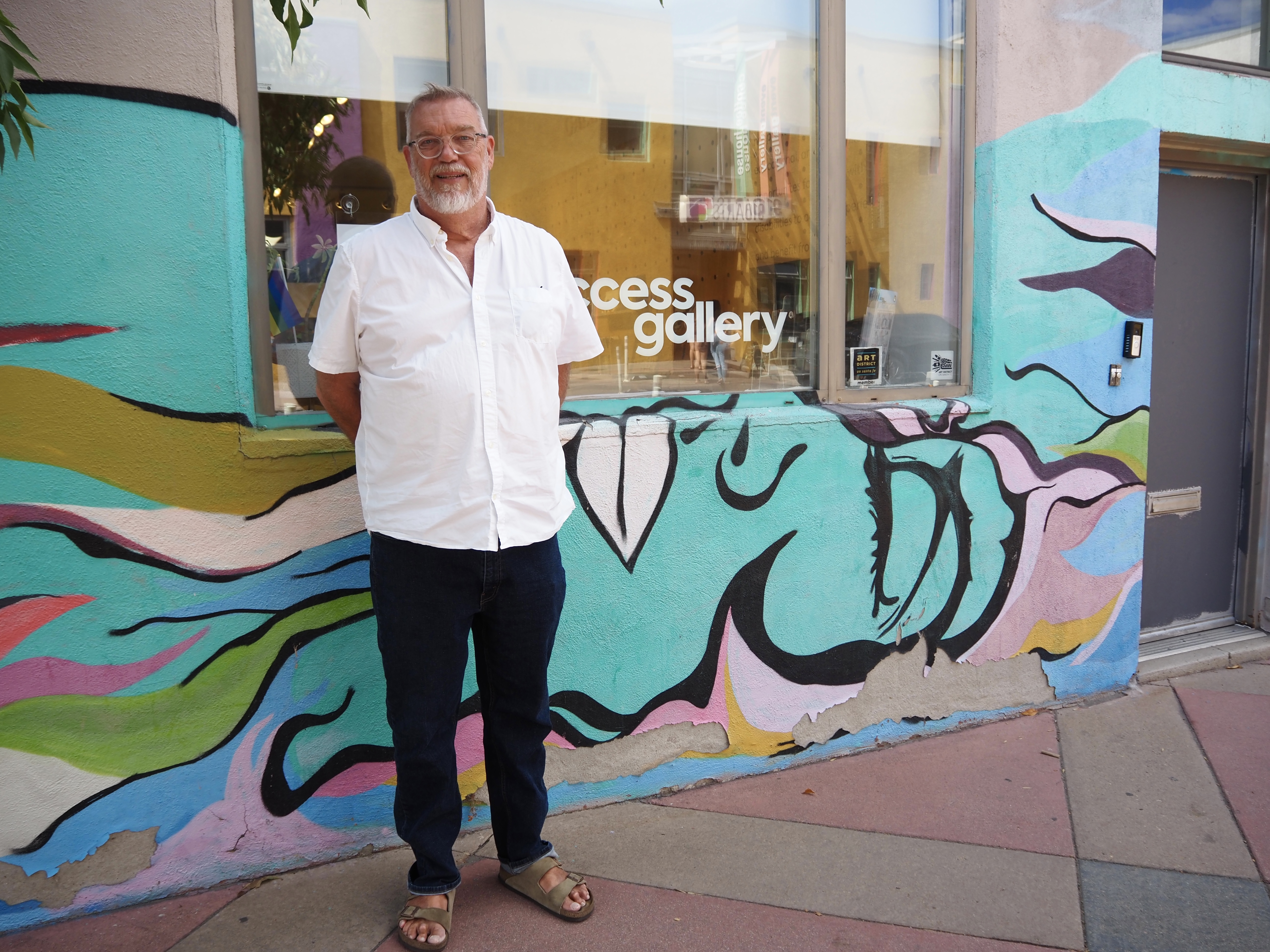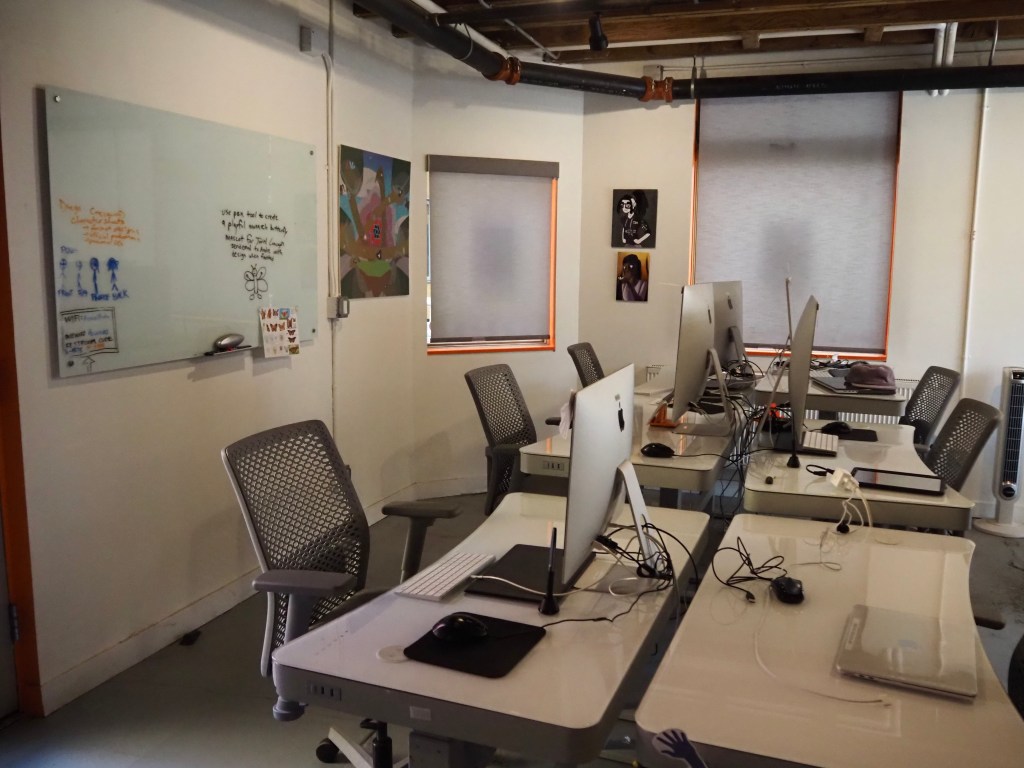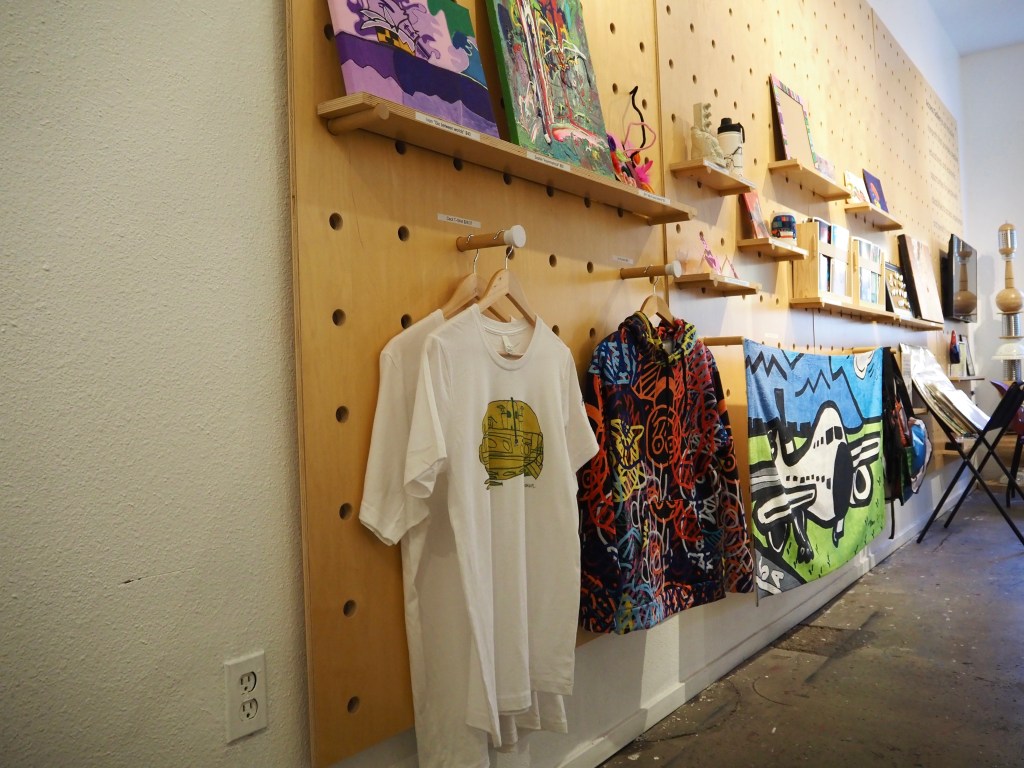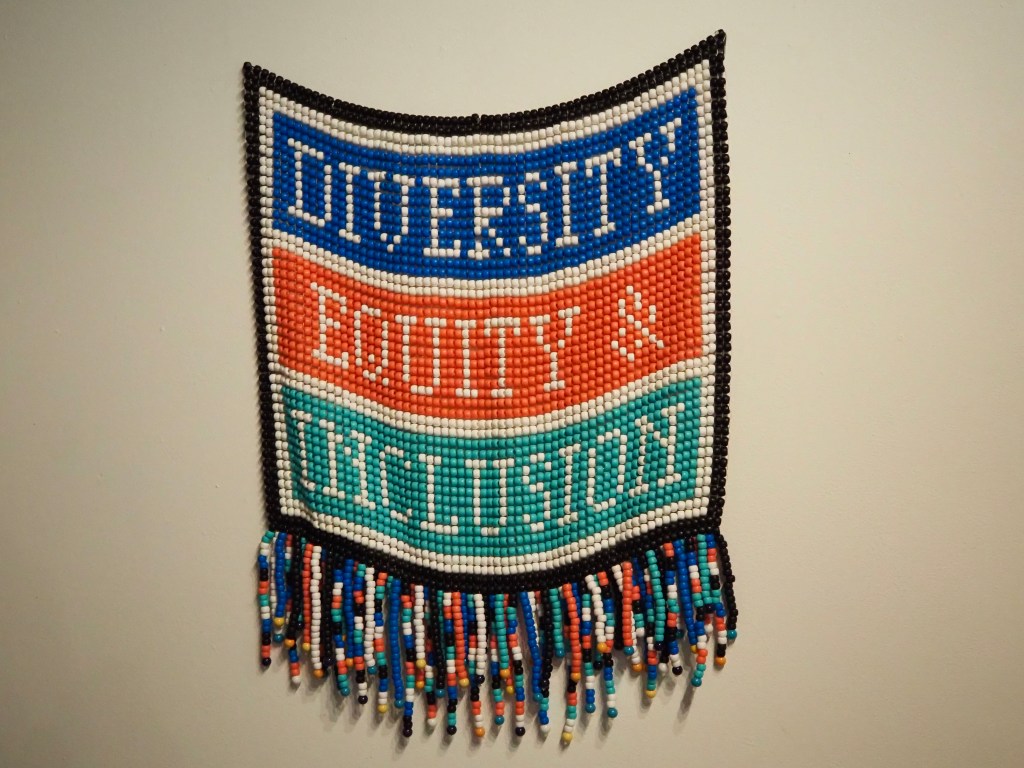
Kristen Fiore

Audio By Carbonatix
When Access Gallery moved to Santa Fe Drive twenty years ago, executive director Damon McLeese remembers the area being a little seedy. But even then, he knew that Denver’s Art District on Santa Fe was the right fit for Access, which serves artists with disabilities.
Access was actually founded in 1978 as an organization in the Colorado Springs School District, working in school-based programming. In 1980, it affiliated with the Kennedy Center — Eunice Kennedy Shriver had founded the Special Olympics and Jean Kennedy Smith started Very Special Arts and moved to Denver.
When McLeese came on board in 1997, Access didn’t have a gallery or even many projects. “A lot of our work then was getting money to school programs serving students with disabilities through the arts,” McLeese says. When Access did open a gallery, it was initially located at 2256 Larimer Street, but in 2005, McLeese jumped at the chance to move operations to Denver’s largest arts district and set up shop at 909 Santa Fe Drive.
In recent years, Access has expanded around ADSF, keeping the gallery as its public-facing headquarters, but opening more spaces for artists to work in: a digital lab across the street from the gallery and a studio at Tenth and Navajo streets.

Kristen Fiore
Access Gallery will celebrate its twenty-year anniversary in ADSF with a party on November 21— but first, the nonprofit has to get through 99 Pieces of Art on the Wall, its only fundraising event for the year, which it has been putting on for about as long as the gallery on Santa Fe Drive has been open.
It’s a popular event, with people often lining up around the corner for a chance to secure a piece of art for $99 and enjoy food and drinks. This year, 99 Pieces of Art is on Friday, September 19. Admission is $9.99, and it’s a “pizza and beer event, not a high-end, black-tie, rubber-chicken event,” McLeese says.
About 30 percent of the art for sale is created by artists with disabilities, and the rest by people who are connected to the gallery in some way — people who visit often, teach at the gallery or work there.
The event usually raises about $25,000, according to McLeese. Otherwise, the gallery is funded by grants from organizations like SCFD, Bonfils-Stanton Foundation and Rocky Mountain Human Services, as well as regular art sales. “Affordable and accessible art is our mantra. We don’t want people to come in here and see a piece of work, and it’s $20,000,” McLeese says. “Our artists are very prolific; a lot of them are emerging.”
Access is also affiliated with groups like Creative Growth Art Center in the Bay Area and Project Onward and Arts of Life in Chicago.
“Our studio program is designed for artists with disabilities to come in. We provide the space, all the materials, all the supplies, mentorship, but they’re really here to explore their own creative outlet and passion,” McLeese says, adding that some local artists have been working with Access Gallery for nearly twenty years.
Artists are connected with resources and classes for the mediums in which they are interested and make art in the studio or at the digital lab, which they can then sell at the gallery. Many of the artists also work on commissions.
Pieces sold at the gallery earn the artists a 50 percent commission, and they often make an hourly rate or a percentage of the contract for public art commissions, McLeese says.

Kristen Fiore
Over the last ten years, helping the artists make money through their art has been a big focus for Access. “We stopped focusing on just process, creation and classes, and started focusing on how to get money into the pockets of the artists that we support,” McLeese says. “That was a real turning point for us. We’re very much about every individual coming up with their own creative practice and what’s interesting to them, but then we help them refine that and get them to the point where it is a sellable product, whether it’s a T-shirt, a painting or a sculpture.”
For many disabled artists, the first barrier to entering the art world is the gallery system. “We have artists who are non-verbal. We have people who don’t speak. Can you imagine an artist taking their portfolio and not being able to speak to a gallery manager?” McLeese says. “It’s not that it’s bad; the system is just not set up for people who might be wired a little bit differently.”
But the bigger underlying issue, McLeese notes, is that society doesn’t value the input of people with disabilities. “People with disabilities are unemployed at a rate of 70 to 90 percent in this country,” he says.
While Access has broad programs that work with artists with any kind of disabilities, it primarily works with artists with intellectual and developmental disabilities. “People with intellectual and developmental disabilities are the ones who have the hardest time getting any kind of economic gain,” McLeese says. “A lot of our artists have dual disabilities; they might have an intellectual disability and a physical disability.”

Kristen Fiore
Access currently serves fifty artists, who all come to the studios to work on their art between one and four times a week. Most of them are connected with Access through a summer job program that hires between ten and fifteen high school students with disabilities who are interested in a creative career and pays them an hourly wage to explore creative opportunities and career paths.
“At the end of the summer, it’s inevitable that one or two of them will stay with us,” McLeese says. “We also accept community referrals.”
In its twenty years in ADSF, McLeese estimates Access Gallery has put on about 200 art shows, and about 1,000 people come through the gallery each month during First Friday. “We’ve made an impact, we’ve got some staying power,” he says. “We respond to what the artists want.”
In the future, McLeese’s goal is to get everything — the gallery, the digital lab and the studio — under one roof in ADSF. But he also just wants more people to come and check out the gallery.
“We’ve been here for a long time. A lot of people know us, but a lot of people don’t,” McLeese concludes. “I’d like to invite people to come down and see what we’re up to. Our work is affordable and accessible; everyone here is very approachable. I think that’s also an opportunity for the gallery to teach people what they’re buying. Sometimes we sell art to people, and it’s their first piece of work they’ve ever bought, and we take pride in that.”
99 Pieces of Art on the Wall runs from 6 to 9 p.m. Friday, September 19, at Access Gallery, 909 Santa Fe Drive. Learn more at accessgallery.org.